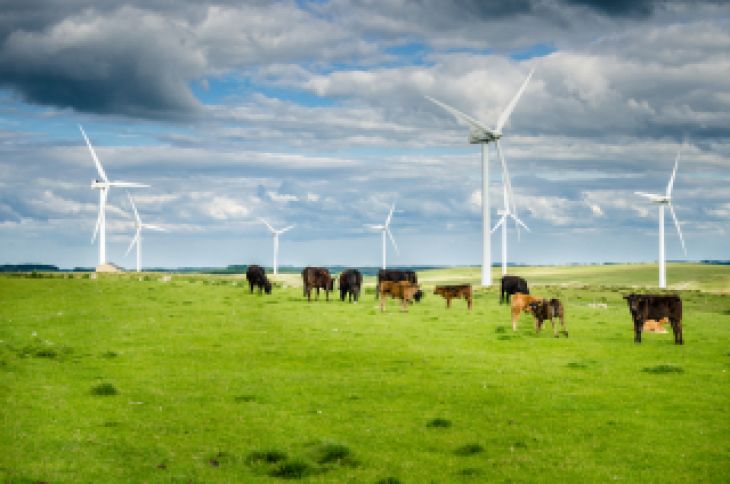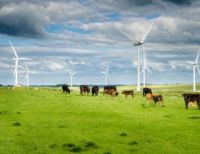Wind power is a source of energy that is both affordable and renewable.
However, decision-makers have been reluctant to invest in wind energy due to a perception that wind farms require a lot of land compared to electric power plants driven by fossil fuels. Research led by McGill University and based on the assessment of the land-use of close to 320 wind farms in the U.S. (the largest study of its kind) paints a very different picture.
Misplaced preconceptions about the land use of gas-fuelled electricity
The study, which was published recently in Environmental Science and Technology, shows that, when calculations are made, the entire wind farm area is usually considered as land given over to wind development. However, the wind power infrastructure (such as the turbines and roads) typically only uses 5 per cent of the entire farmland – the rest is often used for other purposes, such as agriculture.
The research also shows that if wind turbines are sited in areas with existing roads and infrastructure, such as on agricultural land, they can be approximately seven times more efficient, in terms of energy produced per square metre of land directly impacted by the infrastructure, than projects that are developed from scratch.
“The land use of wind farms has often been viewed as among the predominant challenges to wind development,” explains Sarah Jordaan, an associate professor in the Department of Civil Engineering at McGill and the senior author on the study. “But, by quantifying the land area used by nearly 16,000 wind turbines in the western U.S., we found that gas-fired generation offers no real benefits in terms of lesser land use when the infrastructures, including all the wells, pipelines, and roads associated with the natural gas supply chain, are considered.”
A new approach to future energy technology assessments
It has been difficult to get a clear picture of the land use associated with wind power in the U.S. until now because earlier studies only looked at the infrastructure associated with wind energy and land use on a relatively small scale, making it difficult to extrapolate from their results. Other studies have relied on estimates of the entire wind farm, rather than the land directly impacted by the infrastructure.
By combining information gathered through GIS (geographic information systems) with machine learning models developed using nearly 2000 images of wind farms from the American portion of the Western Interconnection (which provides electricity to 14 states in the U.S. as well as to portions of Canada and Mexico), the researchers were able to train a deep learning model to analyze land use in wind farms. By doing so, they were able to assess a range of factors (placement of turbines, pre-existing roads, age of turbines, etc.) that contribute to the land directly impacted by wind infrastructure.
“The method we have developed is potentially useable for future assessments of various energy technologies, whether in terms of environmental impact analysis or energy systems planning for net zero emissions,” adds Jordaan. “In fact, it sets the stage for the first consistent comparisons of environmental sustainability across different energy technologies in future.”
The study
“Land Resources for Wind Energy Development Requires Regionalized Characterizations” by Tao Dai et al was published in Environmental Science and Technology
DOI: 10.1021/acs.est.3c07908
Further reading from the same research team:
“The life cycle land use of natural gas-fired electricity in the US Western interconnection” by Tao Dai et al was published in Environmental Science: Advances
DOI: 10.1039/D3VA00038A
The research was supported by the Alfred P. Sloan Foundation.
About McGill University
Founded in Montreal, Quebec, in 1821, McGill University is Canada’s top ranked medical doctoral university. McGill is consistently ranked as one of the top universities, both nationally and internationally. It is a world-renowned institution of higher learning with research activities spanning three campuses, 12 faculties, 14 professional schools, 300 programs of study and over 39,000 students, including more than 10,400 graduate students. McGill attracts students from over 150 countries around the world, its 12,000 international students making up 30% of the student body. Over half of McGill students claim a first language other than English, including approximately 20% of our students who say French is their mother tongue.














